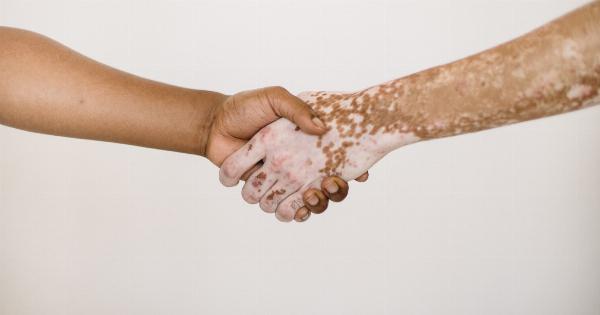Granuloma annulare (GA) is a common skin condition that is characterized by small, raised bumps that form a ring shape. These bumps may be flesh-colored, pink, or red.
While the condition is usually not painful or itchy, some people may experience mild discomfort or irritation. Granuloma annulare can occur in people of all ages and ethnicities but is most common in children and young adults.
Symptoms of Granuloma Annulare
The symptoms of granuloma annulare typically manifest as small, circular bumps that may be slightly raised. The bumps generally appear on the hands, feet, fingers, or toes but can appear anywhere on the body.
They may be grouped together or spread out in a ring formation. The skin around the bumps may look normal or slightly darker than the surrounding skin. In rare cases, granuloma annulare may cause itchiness or a burning sensation.
Types of Granuloma Annulare
There are six types of granuloma annulare:.
- Localized granuloma annulare: The most common type of GA, localized GA usually appears as a single round or oval-shaped bump or a small group of bumps. It typically occurs on the hands, feet, or fingers and toes.
- Generalized granuloma annulare: This type of GA usually appears on the trunk, arms, and legs. It often occurs in older adults and may be associated with other diseases or conditions such as diabetes or thyroid disease.
- Subcutaneous granuloma annulare: This rare type of GA affects the fatty tissue beneath the skin. It typically appears as a painless, firm lump or group of lumps.
- Perforating granuloma annulare: This type of GA usually occurs in children and manifests as bumps that have a central depression or pit. It often occurs on the hands and feet.
- Papular granuloma annulare: This rare form of GA appears as small, reddish bumps that are grouped closely together and form a ring shape.
- Patch granuloma annulare: This less common form of GA appears as patches of skin that are slightly raised and discolored. It usually occurs on the hands, feet, or elbows.
Causes of Granuloma Annulare
The exact cause of granuloma annulare is unknown. While it is not contagious and does not seem to run in families, there may be a genetic component involved.
Some experts believe that the condition may be an autoimmune disorder, in which the body’s immune system attacks its own tissues. Others speculate that GA may be triggered by an infection, injury, or insect bite.
Diagnosis of Granuloma Annulare
Granuloma annulare is usually diagnosed by a visual exam of the skin. If the diagnosis is unclear, a skin biopsy may be performed. During a skin biopsy, a small piece of skin is removed and examined under a microscope to confirm the presence of GA.
Treatment of Granuloma Annulare
In many cases, granuloma annulare will go away on its own and does not require treatment. However, if the bumps are causing discomfort or are unsightly, there are several treatment options available. These include:.
- Topical corticosteroids: These creams or ointments are applied directly to the bumps and can help reduce inflammation and itching.
- Cryotherapy: Liquid nitrogen is used to freeze the bumps, causing them to blister and fall off.
- Phototherapy: Exposure to UV light can help improve the appearance of the bumps.
- Oral medications: In severe cases of GA, oral medications such as hydroxychloroquine or methotrexate may be prescribed to help reduce inflammation and improve symptoms.
Prevention of Granuloma Annulare
There is no known way to prevent granuloma annulare. However, maintaining good overall health and avoiding small injuries or traumas to the skin may help reduce the risk or severity of the condition.
Outlook for Granuloma Annulare
While granuloma annulare can be unsightly or mildly uncomfortable, it generally does not cause serious health problems. The condition may come and go, and in some cases, the bumps may leave behind a scar.
However, most people with granuloma annulare will not experience long-term complications or need ongoing treatment.




























